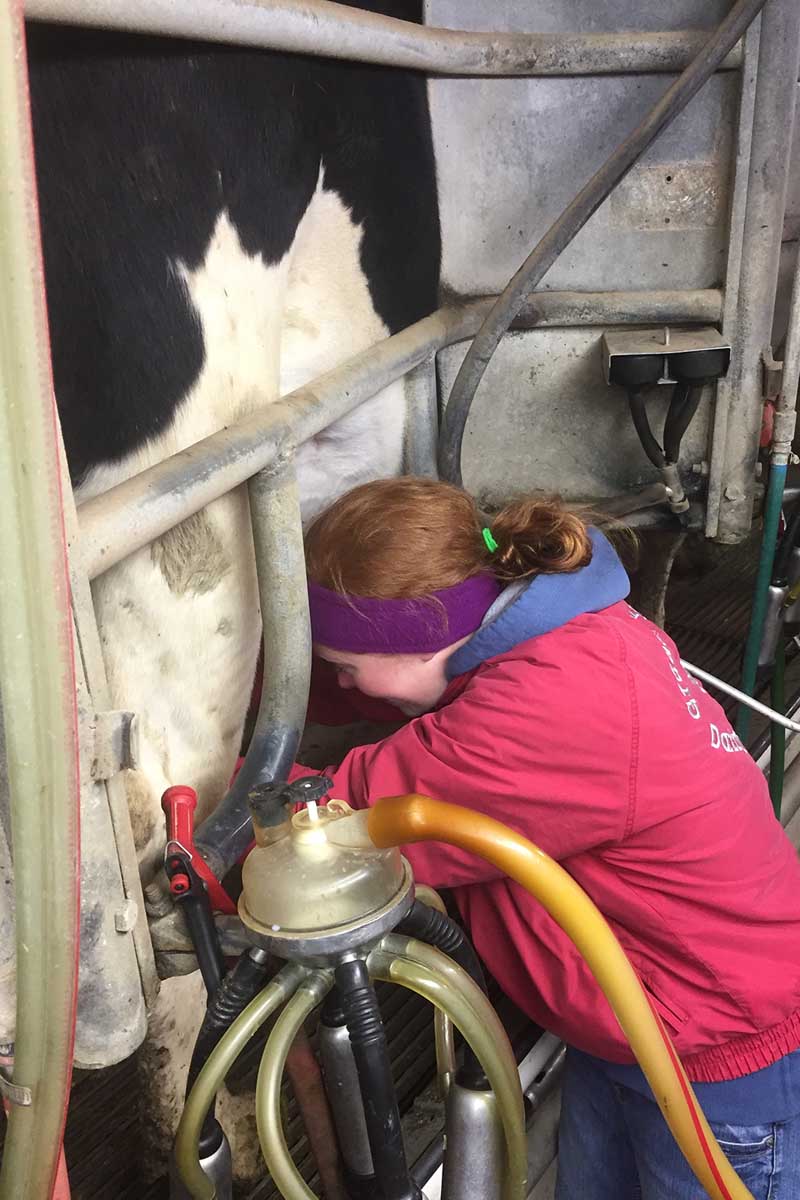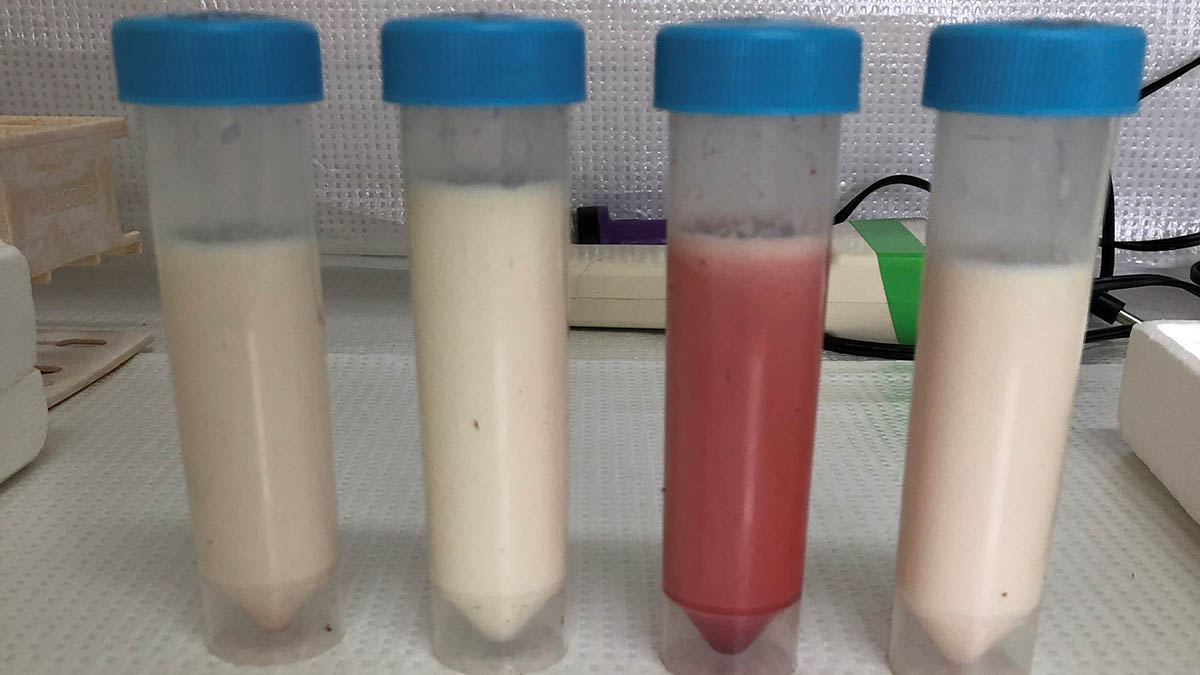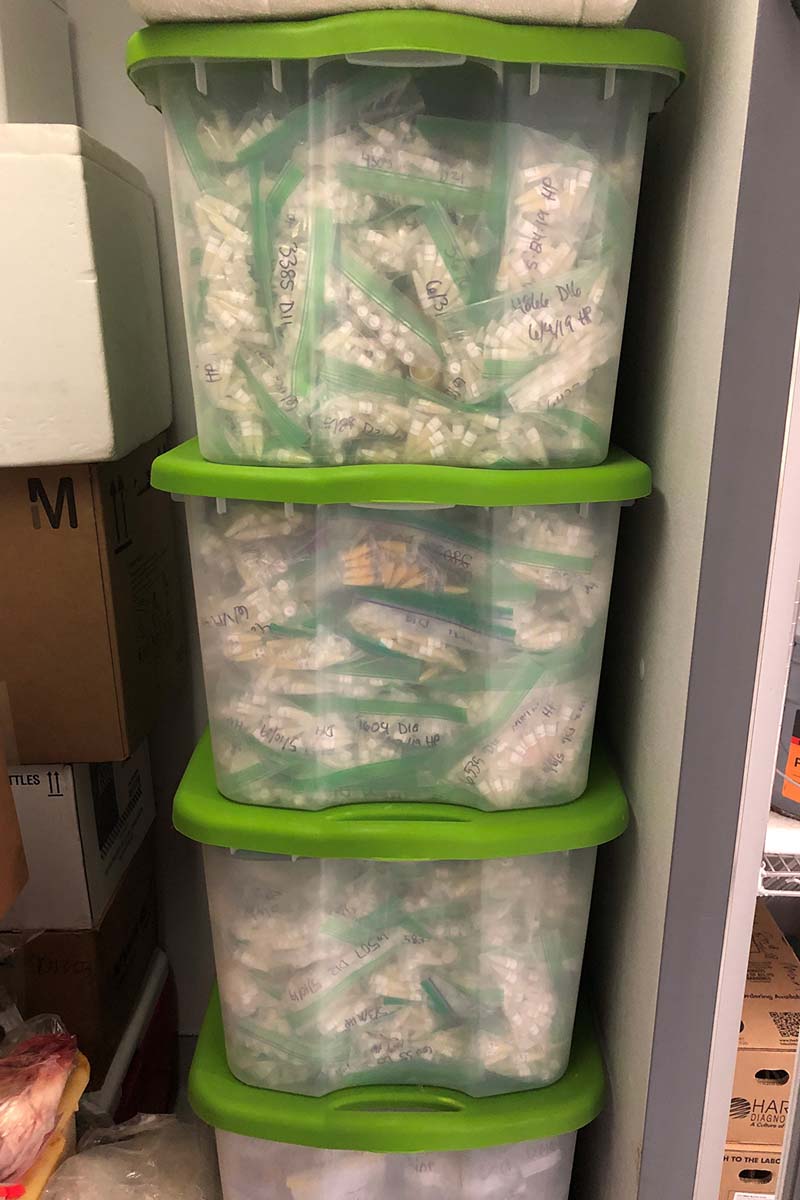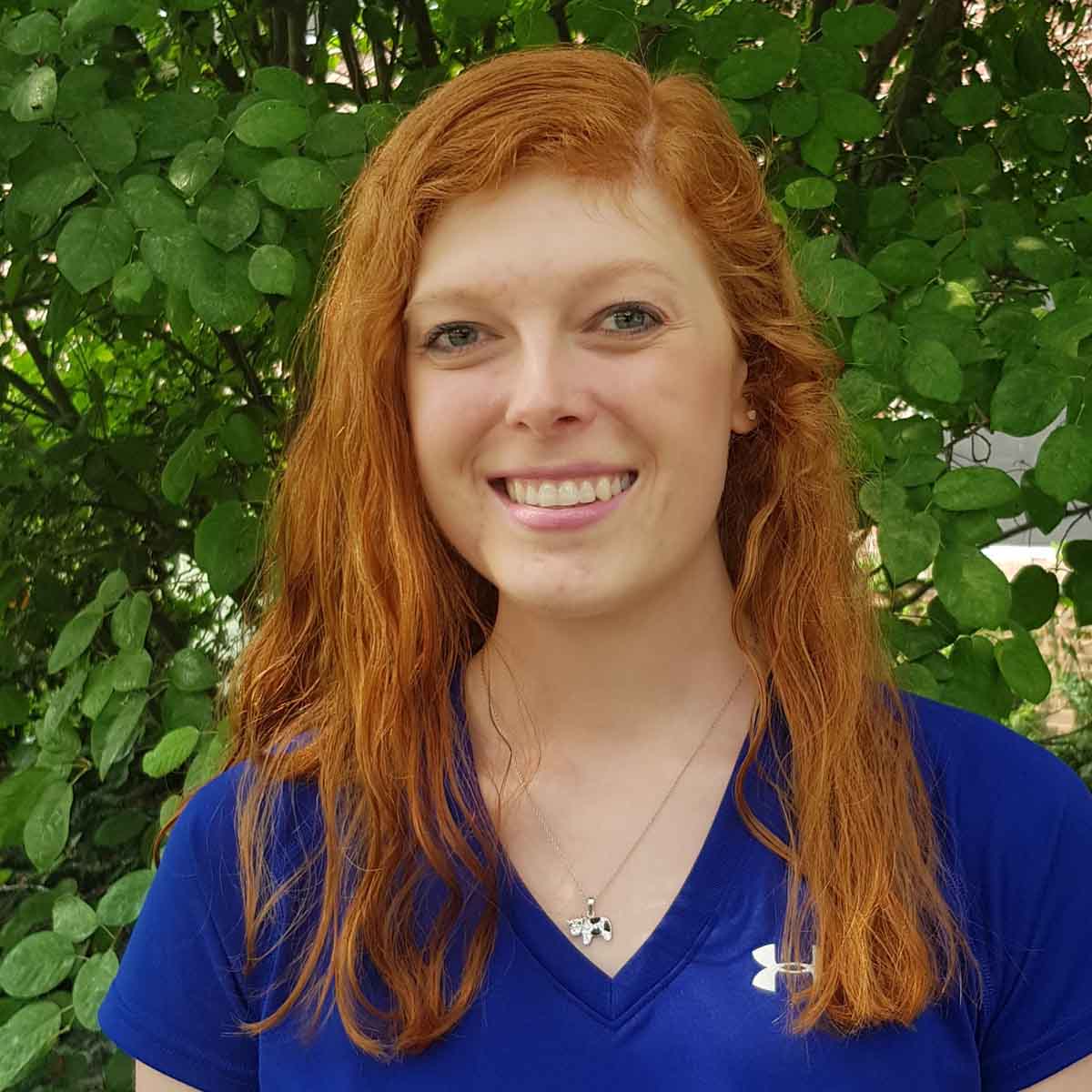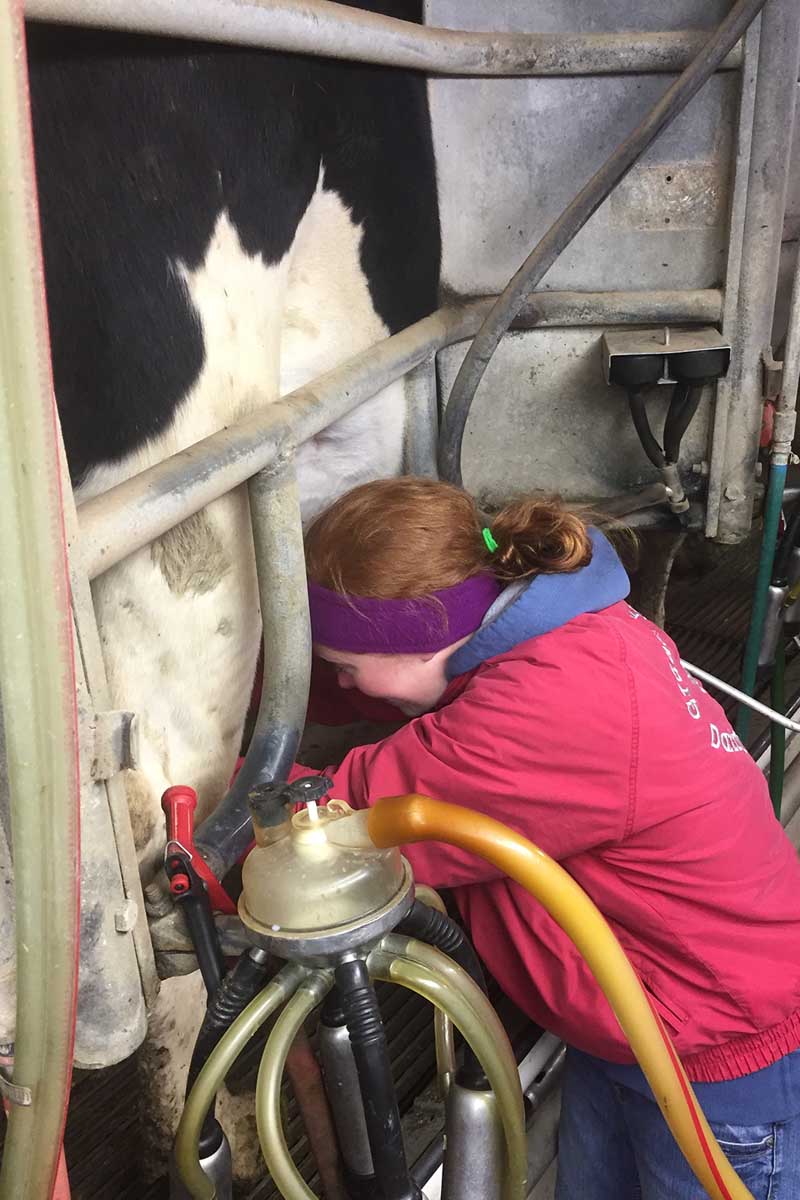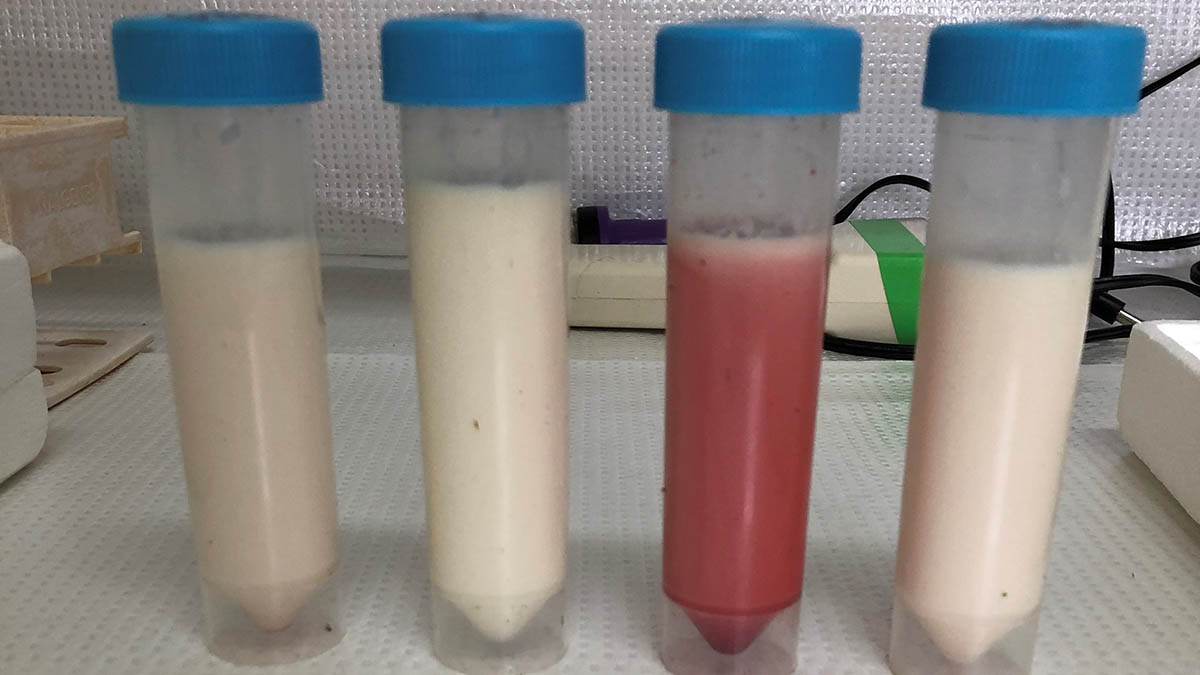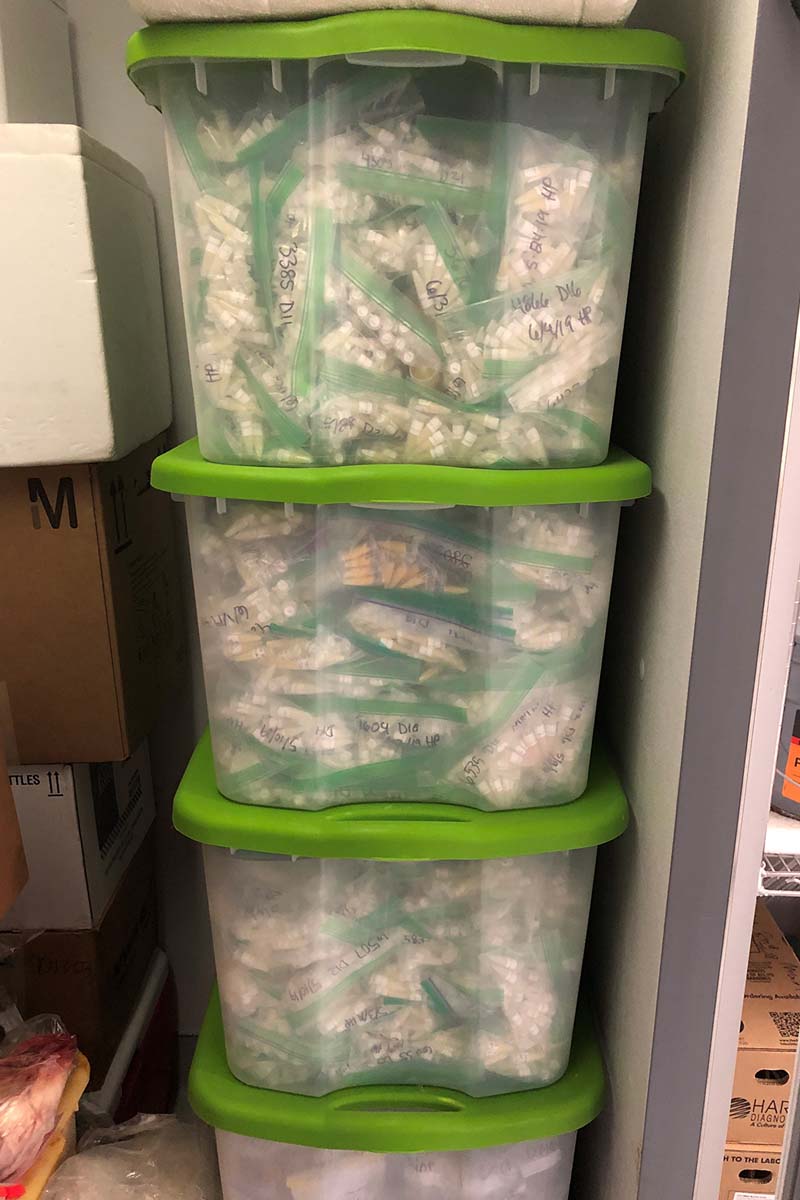Mastitis and the Milk Microbiome
CALS student studies the relationship between the milk microbiome and mastitis
Haley Peterson is fulfilling her childhood dream to work with cows. A doctoral student studying animal science at the University of Idaho, Peterson is investigating the milk microbiome — the community of microorganisms residing in milk — to determine how it relates to mastitis in both cows and humans.
Mastitis is an inflammation of the mammary gland that produces milk. Between the cost of treatments, lost milk and a variety of other expenditures, the disease costs the dairy industry roughly $2 billion every year. In humans, mastitis is the leading cause that stops women from being able to breastfeed their children. Needless to say, mastitis poses serious problems across species.
Peterson’s research project is funded by the National Institutes of Health and the U.S. Department of Agriculture’s National Institute of Food and Agriculture. The interagency partnership developed the “Dual Purpose with Dual Benefit” program, which was established to encourage comparative medicine studies between farm animals and humans.
Mark McGuire, director of the Idaho Agricultural Experiment Station and lactation physiologist, is one of the principal investigators for the study and hired Peterson to help with the project after she completed her bachelor’s and master’s degrees in animal science from U of I’s College of Agricultural and Life Sciences.
Peterson grew up on a 350-head dairy farm in Filer and feels the project was tailor-made for her because it allows her to conduct research on cows that will impact the dairy industry.
“I’ve been around cows all my life and I just love them,” Peterson said. “So, I knew from an early age I wanted to work in agriculture.”
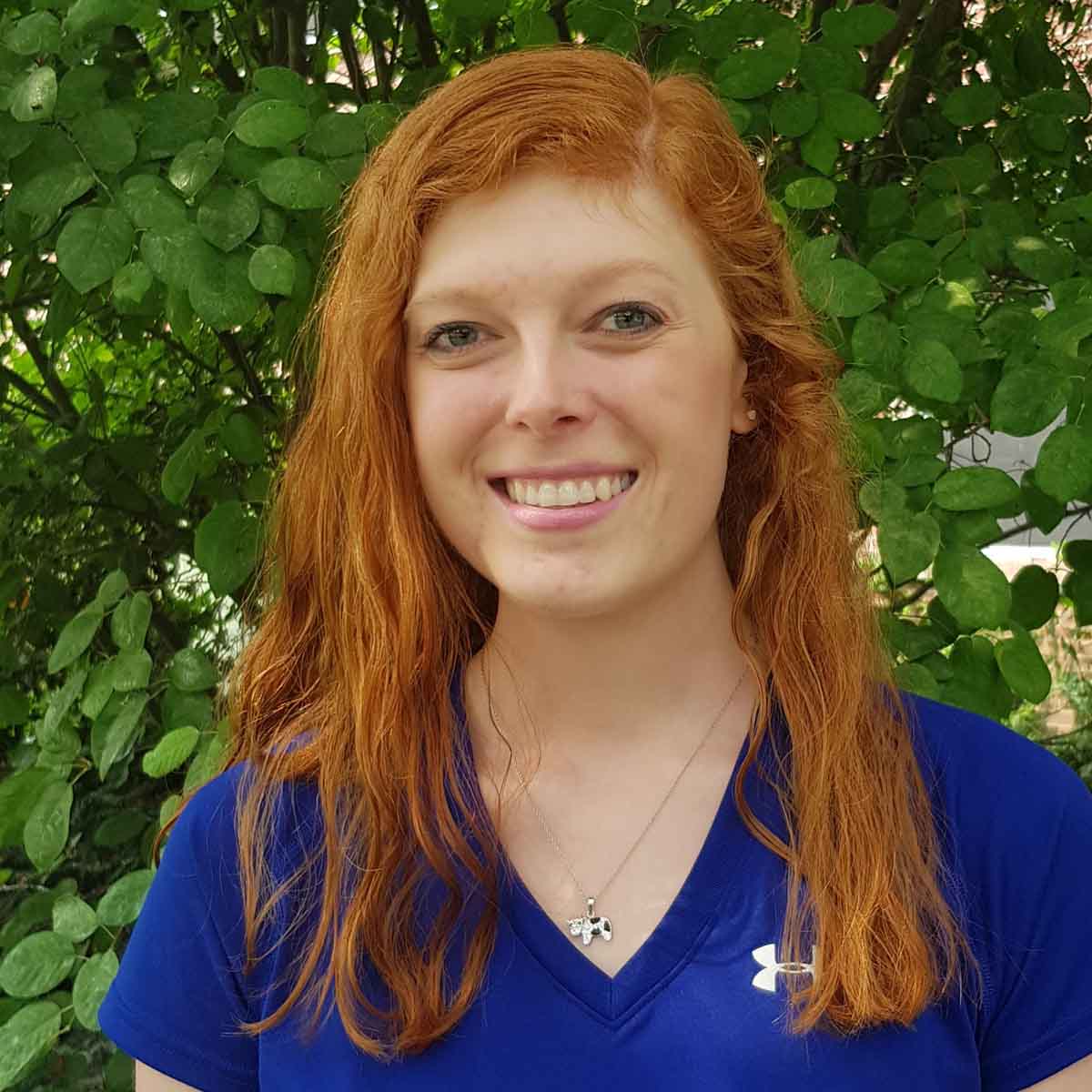
Identifying Risk Factors
By analyzing the milk microbiome before and after animal subjects and human participants in the study develop mastitis, the team is hoping to understand how the microbiome shifts and identify the risk factors that lead to contracting the disease. Results could have implications for future mastitis treatment and prevention.
“It’s a parallel study between the two species,” Peterson said. “Ultimately, our goal is to see if we can use the cow as a model for women, depending on how similar the data look.”
Peterson spent three and a half months in summer 2019 collecting data, or milk samples, from 125 cows on four dairies in the Magic Valley, including her family’s dairy. She collected samples from each quarter of the cows’ udder each day for the first 21 days of lactation after the cows calved, which is the most critical time period for animals to develop mastitis.
“I ended up with roughly 11,000 milk samples,” Peterson said.
During the fall 2019 and spring 2020 semesters, Peterson worked to organize and inventory the 11,000 samples. She began analyzing the data in summer 2020 to characterize the milk microbiome within the samples.
Global collaborators are assisting with other means of data analysis, including the Pacific Northwest National Laboratory, which is utilizing metabolomics (study of metabolites), lipidomics (study of cellular lipids) and proteomics (study of proteins) to identify the functions of certain bacteria in milk. Samples will also be sent to a nutritionist working at the Complutense University of Madrid, Spain, who utilizes techniques to examine the immune factors present in milk.
Other members of the research team are working to finish collecting milk samples from women participating in the study before data can be systematically compared between the two species.
“The next two years is really focused on all these data,” McGuire said. “Essentially everything that is in milk, we’re going to analyze it.”
When she graduates in May 2021, Peterson hopes to work for the Idaho Center for Agriculture, Food and the Environment being built in southern Idaho. Working at the center would allow her to continue conducting research on cows and be closer to home to eventually take over her family’s dairy farm.
McGuire said he is confident that Peterson’s well-versed knowledge of the dairy industry, research ability and leadership skills will lead her down a road of success.
Article by Jean Parrella, College of Agricultural and Life Sciences
Photos provided by Haley Peterson
Published in July 2020
